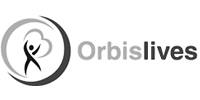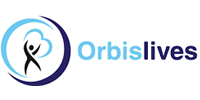Transform Ideas Into Scalable Enterprise Solutions
Unlock business potential with Custom AI enhanced Enterprise Software. Transform ideas into scalable software solutions. With an AI-first approach, we deliver everything from rapid prototypes to enterprise-grade platforms that create long-term value and measurable results
Power Your Business with AI and Smart Technology
Stay ahead of the curve with enterprise grade software solutions powered by AI, intelligent automation, and data-driven decisions. We help organizations lead the future of digital transformation through robust, scalable and secure systems.
Drive Business Growth With Tailored Software Solutions
Our team of engineers deliver software development services tailored to your business goals. From reducing costs to enhancing efficiency, our enterprise software solutions are built for growth and scalability.
AI-Driven
Efficiency
Future-Ready Technologies
Industry-Focused Intelligence
Scalable Digital Architecture
Simplify Your Business
With Smart Technology

Enterprise Software Solutions Enabling Growth
Tailored software solutions that accelerate growth and drive measurable results.
AI-Focused Custom Enterprise Software Development
Digital Transformation & AI Enablement
Intelligent Data & AI Analytics
Smart IoT & Blockchain Solutions
UX Design for Enterprise Applications
Performance-driven Digital Marketing
It’s time to take control and build smarter! Let’s get started
number of prestige
Strategy-Driven. Scalable by Design
Our methodology ensures that every solution is designed for long-term success:
Discovery & Strategy – Understanding your business goals.
- Architecture & Prototyping – Designing intelligent enterprise software solutions.
- Agile Development – Iterative cycles for speed and adaptability.
- Optimization – Continuous improvements post-launch.
- Support & Growth – Reliable long-term scaling.
This makes us a trusted partner for enterprise software development worldwide.
IT Solutions Powering Industries
Whether you need a cross-functional ERP or industry-specific software, Rayblaze provides AI-focused, scalable platforms that are built to scale, aligned with your business growth.
Case Studies
Stories of business challenges solved and goals achieved.
Real Estate Research & Valuations in the U.S.
Revolutionizing Trucking Operations with Smart Tech
E-Commerce Platform for Canadian Pet Food Brand
Virtual Clinic
Secure E-Learning Platform
We are not another Enterprise Software Development Company—we are your partner for building future-ready software solutions. With a strong base in AI, cloud, IoT, and industry-specific systems, we help businesses reduce costs, improve efficiency, and scale faster. Whether you are seeking software development services or specific development, our team delivers solutions that scale fast.
Worldwide Success Numbers

Testimonials

Jessica J Rust

Mayra Yadir

Rajesh Nair

Mathew John
Insights, Stories & Industry Trends
Stay informed with the latest updates, expert opinions, and success stories from the world of technology and innovation.


Got a Question? Get Your Answer.
Find quick answers to common questions. Still need help? Contact us anytime.
1. What does Rayblaze specialize in?
2. Which industries does Rayblaze serve?
3. How does Rayblaze approach digital marketing?
4. What technologies and services does Rayblaze offer?
Let’s Collaborate!
India
+91 90619 04566
+91 79075 08097



























